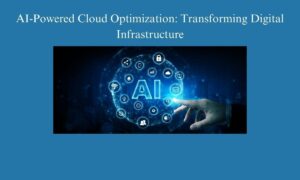In the era of digital transformation, Shravan Kumar Amjala, a noted expert in digital sustainability, explores the transformative role of artificial intelligence in reshaping cloud computing towards environmental responsibility. His insights highlight how AI is emerging as a powerful tool to address the pressing ecological challenges posed by expanding cloud infrastructure. This article delves into the innovative approaches shaping the future of greener, smarter cloud ecosystems.
Rethinking Digital Growth for the Planet
Cloud computing is now the foundation of our digital lives, powering everything from communication to entertainment. Yet, as this infrastructure grows, so do concerns about its environmental toll. Traditionally, more data has meant more energy use, but recent advancements have kept consumption in check even as workloads surge. Still, without continuous innovation, the energy demands of cloud services—especially those required for AI and data-heavy applications—could escalate rapidly, risking significant carbon emissions, increased water usage, and growing electronic waste.
AI: The Sustainability Brain of the Cloud
The emergence of artificial intelligence in cloud operations signals a breakthrough in tackling these sustainability challenges. AI-driven platforms now analyze operational patterns, environmental conditions, and system variables, allowing organizations to trim energy usage, reduce emissions, and meet ambitious climate goals. By embedding intelligence directly into cloud systems, AI ensures that sustainability becomes a built-in objective, not just an afterthought.
Smarter Cooling and Workload Distribution
AI-driven cooling optimization now enables real-time analysis of heat distribution and server workloads in data centers, allowing cooling resources to be precisely targeted where needed. Sensors and machine learning models monitor temperatures, fine-tune airflow, and reduce unnecessary energy use while maintaining performance. This not only saves energy but also extends hardware lifespan by preventing overheating. Dynamic workload scheduling is another advancement: AI predicts when and where cleaner or more abundant energy is available, shifting computing tasks to those times or locations. By adapting workloads to greener grids and renewable energy windows, digital infrastructure becomes both efficient and environmentally responsive.
Predicting and Managing Carbon Footprints
AI is transforming carbon management in cloud computing. By analyzing factors like weather and historical data, machine learning predicts the carbon intensity of electricity grids. This lets organizations schedule non-urgent tasks when grids use cleaner energy, minimizing carbon footprints. AI-driven resource allocation also considers carbon impact, routing workloads to data centers with the lowest emissions. Before deploying new cloud strategies, AI-powered simulation tools help organizations model and compare the environmental effects of different options. These predictive analytics enable decision-makers to select solutions that optimize sustainability, performance, and reliability, making cloud operations greener and more responsible.
Greening Software from the Ground Up
AI now shapes software sustainability from the start. Energy-efficient code analysis tools help developers spot wasteful algorithms, redundant operations, and poor data handling, reducing excess energy use. This promotes energy-aware development throughout the software lifecycle. Infrastructure modeling also improves, as advanced simulations balance computational power with energy and cooling needs, factoring in hardware lifecycles from manufacturing to recycling. Even software development processes, such as automated testing and continuous integration, are optimized by AI to minimize unnecessary resource consumption at every stage.
Connecting Clouds to Cleaner Energy
Integrating cloud computing with renewable energy and smart grids represents a significant advancement in sustainability. AI systems now align energy consumption with periods of peak renewable output, dynamically shifting workloads to optimize clean energy use. Distributed data centers can move computing tasks across regions to capitalize on local renewable availability. Additionally, cloud platforms participate in demand-response programs, adjusting power usage to stabilize energy grids during high demand. By leveraging advanced scheduling and coordinating with local energy systems, cloud infrastructure reduces its environmental impact while actively supporting the broader transition to renewable energy.
In conclusion, AI-driven cloud sustainability marks a transformative shift in digital infrastructure, embedding intelligence throughout to balance environmental stewardship with technological growth. The innovations in intelligent energy management, carbon forecasting, green architecture design, and renewable integration collectively pave the way for net-zero digital ecosystems. As these AI technologies evolve, autonomous systems will continually optimize cloud operations, making climate-aligned computing an integral standard. The insights offered by Shravan Kumar Amjala illuminate this promising frontier where artificial intelligence and environmental responsibility converge.



































